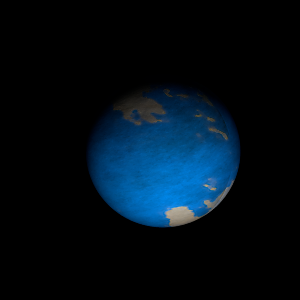|
|
Space Astro
|
Info for exoplanet "Trinnaq Steph"
| Scientific (actual) data |
|---|
| Name | Kepler-1213 b |
| Planet status | Confirmed |
| Radius | 0.106 |
| Orbital period | 5.34982 |
| Discovered | 2016 |
| Updated | 2021-02-05 |
| Tconj | 2454970 |
| Publication | Announced on a website |
| Detection type | Primary Transit |
| Alternate names | 2MASS J19175659+5056389 b, K02372.01, KIC 12254909 b, KOI-2372 b, KOI-2372.01, WISE J191756.59+505639.1 b |
| Star name | Kepler-1213 |
| Right ascension | 289.49° |
| Declination | 50.94° |
| Mag j | 12.367 |
| Mag h | 12.043 |
| Mag k | 11.988 |
| Star distance | 685 |
| Star metallicity | 0.13 |
| Star mass | 1.14 |
| Star radius | 1.21 |
| Star age | 3.47 |
| Star temperature | 6050 |
| Star alternate names | 2MASS J19175659+5056389, KIC 12254909, KOI-2372, WISE J191756.59+505639.1 |
| Wikipedia article | Kepler-1213 b |
Back
| |
| Fictional info (?) |
|---|
| Suggested name | Trinnaq Steph |
| Planet type | Cold planet |
| It is the coldest planetary atmosphere in its solar system, with a minimum temperature of 35°K (-238°C), and has a complex, layered cloud structure with ethane thought to make up the lowest clouds, and nitrogen the uppermost layer of clouds.
It may have had hydrogen oceans in the past, but these would have vaporized as the temperature rose due to a runaway greenhouse effect. The hydrogen has probably photodissociated, and the free nitrogen has been swept into interplanetary space by the solar wind because of the lack of a planetary magnetic field. |
| Atmosphere | Nitrogen | 43% |
| Ethane | 30% |
| Hydrogen | 20% |
| Hydrogen peroxide | 7.3% |
| Molecular hydrogen | 0.0019% |
| Ammonia | 0.0003% |
| Atmospheric pressure | 2 bar |
 |
| Moon | Drafar | Medium-sized irregular gaseous moon |
| Google search for Trinnaq steph |
|
Website by Joachim Michaelis
|
|
|
|